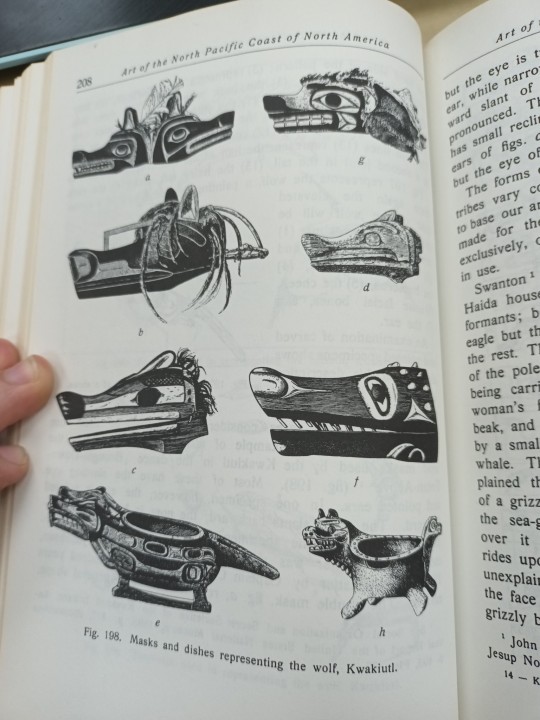#Kwakiutl
Text
For #WorldOrcaDay here are 2 examples of #orca (aka killer whale) headdresses from the Northwest Coast that the dancer could animate with moving parts:
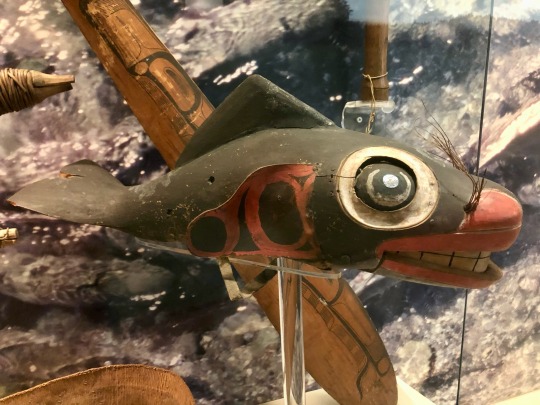
1. Haida - “dancer could roll its eyes or move lower jaw”
Carnegie Museum of Natural History
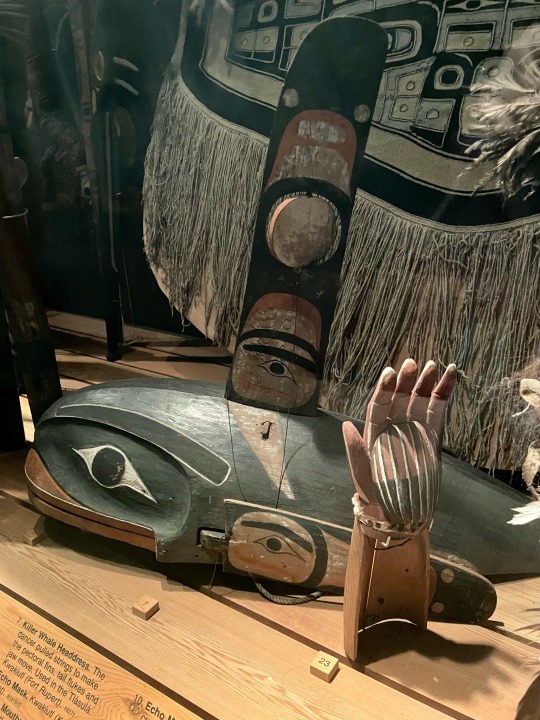
2. Kwakiutl - “dancer pulled strings to make the pectoral fins, tail flukes & jaw move”
Field Museum
#animals in art#World Orca Day#orca#killer whale#headdress#woodwork#indigenous art#first nations art#native american art#museum visit#Field Museum#Carnegie Museum of Natural History#animal holiday#Kwakiutl#Haida
79 notes
·
View notes
Text

#Kwakwakaʼwakw#Kwakiutl#culture#art#totem poles#British Columbia#indigenous#Native Americans#book cover#cover design#Kwakiutl First Nation#anthropology
25 notes
·
View notes
Text
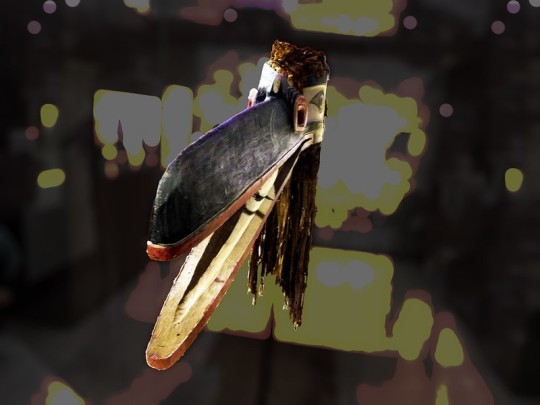
Man-eating bird, Kwakiutl
#kwakiutl#Cannibalism#Cannibal spirit#museum exhibit#Museum of Us#balboa park#san diego county#san diego#california#photo#digital#original photographers#color splash
2 notes
·
View notes
Text
'' At one point in the film we see, in slow motion, an eagle swoop down and lift a fish from the waters of Alert Bay, a background voice saying, “Our people were so, so rich; rich with wealth, not money…. We had a really good system here that went on since the beginning of time.” In cases like that, the verb “to be” (“potlatch is”) is best conjugated not in the simple present but in what has been called the “prophetic perfect,” a tense that bespeaks a perennial life constantly blooming in the present moment. ''
-Lewis Hyde, The Gift
0 notes
Text
For #WorldOtterDay + #Woodensday:

Top: wooden sea otter effigy feast bowl, Kwakiutl culture
Bottom: wooden bowl with sea otter at one end & human at other, Haida culture
Both collected in 1897, now on display at Field Museum in Chicago.
#Indigenous Art#First Nations Art#Native American Art#Kwakiutl#Haida#bowl#woodwork#wood#effigy vessel#otter#sea otter#World Otter Day#marine mamals#Field Musem of Natural History#museum visit#animals in art#animal holiday
72 notes
·
View notes
Text
The Bella Coola and the Kwakiutl societies of the Pacific Northwest provide a striking example of how establishing connections between kin groups sometimes took precedence over sexual or reproductive issues in determining marriage. If two families wished to trade with each other, but no suitable matches were available, a marriage contract might be drawn up between one individual and another’s foot or even with a dog belonging to the family of the desired in - laws !
0 notes
Photo
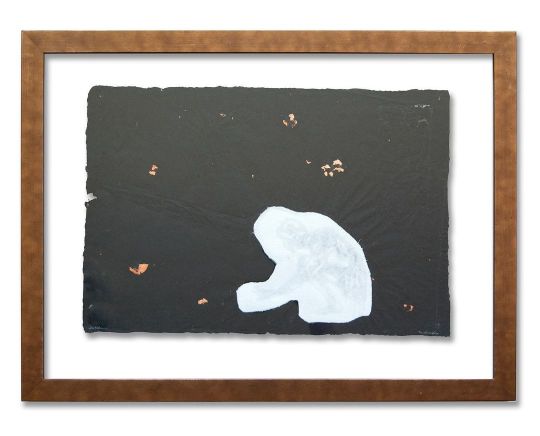
“Transformation” is a handmade paper artwork featuring watermarks as a significant part of the design. Swipe to see it backlit. Read more about the creation of this piece on my brand new blog (link in profile). This framed piece is now 50% off the listed price on Etsy, with code TRANSFORM. #donwidmerpaperarts #handmadepaper #watermarks #hamatsa #totems #masks #pacificnorthwest #kwakiutl https://www.instagram.com/p/CdYwkU_rcTy/?igshid=NGJjMDIxMWI=
0 notes
Text

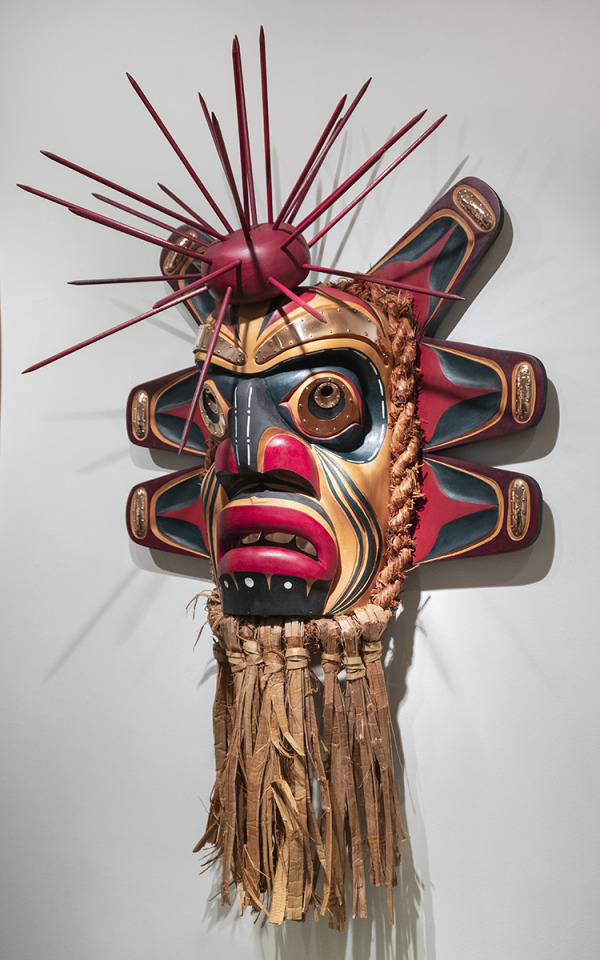

Ḱumugwe’
Troy Kwakseethala
30 notes
·
View notes
Text
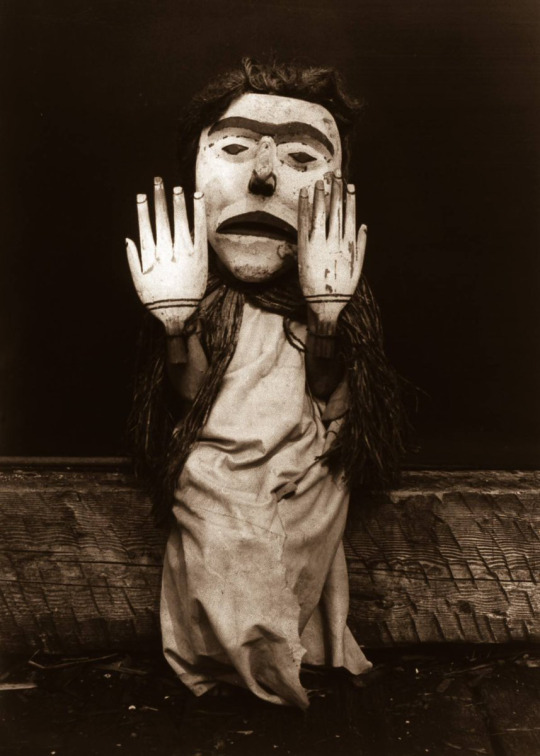
Kwakiutl person dressed as a forest spirit, British Columbia, Photo by Edward S Curtis, 1914
140 notes
·
View notes
Note
Have you reviewed the Natu line yet? I feel they’re forgotten about these day

I honestly really like this line. There's just something really appealing about a bunch of barely-moving psychic birds that stand around witnessing The Horrors(TM) 24/7.

Natu doesn't strictly speaking need to exist, but it's different looking enough from its evo—possessing tail feathers, a distinct wing pattern, and a completely different body shape—that it still stands on its own visually if not conceptually.
In addition to the vaguely indigenous patterns, it also has a very nice color palette, using green, red, and yellow. It looks colorful enough due to the different hues, but the limited amount keeps it pretty coherent. The completely flat eye also helps convey the "staring in the future" idea nicely.

Xatu is a really solid continuation of Natu's main traits, keeping the same palette and distinctive eye and markings, but expanding the design to include a much more well-defined body shape and increasing the complexity of the patterns.
Another neat thing is that it expands upon the vague artistic notions of Natu by gaining a totem pole theme, what with it not moving and having a "second head" with its chest markings (it's even named after the xat, a pole specifically used as a memorial to the dead).

I do sort of wish this line had been a bit more specific about which cultures and totem poles they were aiming for, as they all different significance and mashing them all together feels a bit wishy-washy. Still, it's not the point of being inconsiderate by any means, just vague.
Honestly, I have no problems with these two beyond that, but I do think they could use an evo (or something mega-esq). Totem poles are not only beautiful, but can be extremely complex, often sporting multiple figures in one pole depending on culture and meaning. One of the world's tallest story poles was carved by the Kwakiutl tribal chief Mungo Martin and looks remarkably like the line, to get an idea of what I'm thinking:
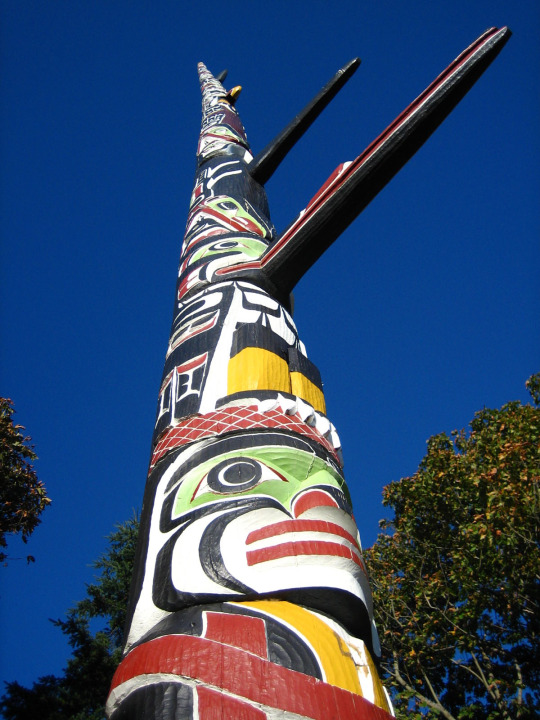
Add more markings, give it an entire (true) second head or beak, make it taller... really, the concept is right there. The line's not particularly strong either, so it could use the boost.

Anyway, overall, this is a very strong line with striking visuals and a strong, straightforward concept. Aside from some inspirational vagueness, it's dang near perfect in my book.
95 notes
·
View notes
Text
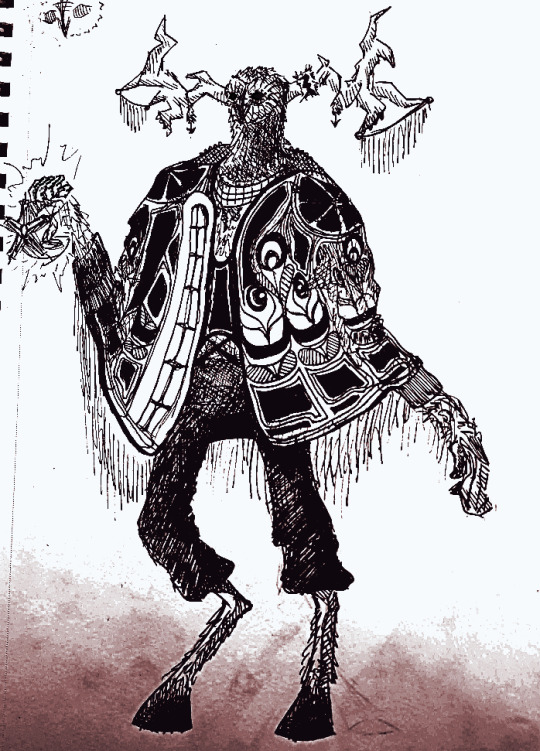
more Owlk art!!! Inspired by Kwakiutl indigenous art because the patterns on the Stranger and the Owlks' architecture reminded me of it
#art#artwork#echoes of the eye#owlk#echoes of the eye outer wilds#outer wilds fanart#outer wilds spoilers#outer wilds#echoes of the eye spoilers#fanart#I love the owlk designs they go so hard
97 notes
·
View notes
Text
According to the expressions used by the Kwakiutl, a wife is "obtained in war" from a foreign tribe. The chiefs make war upon the princesses of the tribes. The subject of one of the favorite folk tales is the story of a man who makes war against the chiefs of foreign tribes and, by the mere threat of an attack, induces them to give him their daughters, either to be his own wife or that of one of his brothers or near relatives Boas and Hunt, 1905, 209). The fiction is also maintained in the actual marriage ceremonies, which occasionally include a sham battle between the wooing party and the relatives of the bride, or in which the groom's party is subjected to tests that show that the powers of the bride's father cannot vanquish them.
Aside from this fiction, marriage is conducted on the basis of the pot-latch. Setting aside minor details, an agreement is first reached between the parents or, after their death, by those who assume the parents' re-sponsibility. The payment to be made to the girl's parents having been agreed upon, a binder is paid by the grooms representatives. When the number of blankets setled upon has been accumulated by loans from the groom's numayma, the bride price is delivered to the house of the brides father. In addition to the stipulated price, blankets are paid to call de princess and to still others to "lift the princess from the floor of the house Then the bride is handed over to her future husband's party, and her father gives her husband blankets to represent her mat (le'we), food, and household goods, such as boxes, baskets, dishes, and spoons needed by the young couple. The value of these is often almost, if not quite, equal to the pries paid. In some cases, the bride's father gives at the same time a copper, names, and privileges to his son-in-law, but ordinarily this payment is deferred until a later time, generally after the birth of a child, when "the repayment of the marriage debt" takes place. This does not consist of blankets, but of "bad things, trifles," which include food, house. hold goods of all kinds and particularly a copper, names, and privileges which are handed over in the "privilege box." The value of the goods paid at this time is far in excess of what the bride's father has received. It is important to note that the only payment in the recognized standards of value is made by the groom. All the return payments are in objects.
The fiction that the marriage is one between two tribes or villages is maintained throughout. The groom's party is said to arrive by canoe, and when repaying the marriage debt, the father-in-law is supposed to arrive on a catamaran- two canoes tied together and covered with a platform of planks. The mast of the catamaran is the copper given to the son in law.
After the repayment of the marriage debt, the obligations of the contracting parties have been fulfilled, and the marriage is ended. If the young wife continues to stay with her husband, she stays
"for nothing," which is not dignified. A new contract has to be made in the same way as the first one, but the payments are generally much less. The whole matter seems to be a little more of a formality, although proud and rich people may make the same extravagant payments as they did in the first marriage. In the records of marriages in which many children are born, there are no references to this attitude, although the principle of the end of the marriage after the repayment of the marriage debt is clearly in the minds of the Indians. The repayment of the marriage debt may be delayed for several years and the children born during this period receive names and privileges from their maternal grandfather. Undue delay of the repayment of the marriage debt is liable to cause trouble. When a certain man seemed to evade this duty, his son-in-law had an image representing his wife carved. At a feast to which he had invited the people, he put a stone around the neck of the image and sank it in the sea. Thus he blemished the rank of his father-in-law.
Often, after the annulment of a marriage through repayment of the marriage debt, the woman is married to another man. I shall give an example of this later on. After four marriages, her high rank is established, and it seems to be assumed that after this she should stay with her last husband.
The advance in social rank arising from the potlatch features of the marriage often overshadows entirely the primary object of a marriage, namely, the establishment of a family. Instead of this, the transfer of names and privileges becomes the primary consideration, and fictitious marriages are performed, the sole object of which is the transfer of names, privileges, and property previously described.
Difficulties arise when no daughter is available through whose marriage a name may be transmitted to her offspring. It cannot be done directly through the marriage of a son. For instance, a certain chief had two wives and only one son. The son married two wives but had no issue. Then the chief "turned the left side of his son's body" into a woman and gave him the name belonging to the eldest daughter of his line. Soon another chief, who wished to get the names belonging to the father of the man whose one side had been turned into a woman, wooed her, and the whole marriage ceremony was performed. The young man stayed in his father's house, but when the time for the transfer of names occurred, the appropriate ceremony was performed just as though a real marriage had been performed. Sham marriages of this type are the device resorted to in such cases.
If there is no son, the father may call his foot, or one side of his body, his daughter. The marriage ceremony is performed as though these were the women married, and the names are transferred in the usual manner.
Kwakiutl Ethnography, Boas
40 notes
·
View notes
Text

“Wolves figure prominently in the mythology of nearly every Native American tribe. In most Native cultures, Wolf is considered a medicine being associated with courage, strength, loyalty, and success at hunting. Like bears, wolves are considered closely related to humans by many North American tribes, and the origin stories of some Northwest Coast tribes, such as the Quileute and the Kwakiutl, tell of their first ancestors being transformed from wolves into men. In Shoshone mythology, Wolf plays the role of the noble Creator god, while in Anishinabe mythology a wolf character is the brother and true best friend of the culture hero. Among the Pueblo tribes, wolves are considered one of the six directional guardians, associated with the east and the color white. The Zunis carve stone wolf fetishes for protection, ascribing to them both healing and hunting powers.”
— NATIVELANGUAGES.ORG


“Alpha” a commission art piece by Christine Adele Art #artISlife #lifeISandart
Many animals represent transformation, but none so powerfully or as sacred as the wolf.
8 notes
·
View notes
Text
For #InternationalBeaverDay here are two wooden beaver effigies spotted at the Smithsonian National Museum of the American Indian:

object name: beaver figure
culture: Kwakwaka’wakw (Kwakiutl)
place of origin: British Columbia
date: c. 1900
materials: wood, paint
dimensions: 16.5 cm. I.; 15 w.; 28 h.
NMAI catalogue # 21/1355

object name: beaver bowl
culture: Tlingit
place of origin: Klukwan, Alaska
date: c. 1850
materials: wood
dimensions: 33 cm. I.; 16 w.; 13 h.
NMAI catalogue # 23/8417
#International Beaver Day#animal holiday#beaver#rodents#Native American art#First Nations art#Indigenous art#19th century art#20th century art#effigy#figure#bowl#sculpture#woodwork#carving#Tlingit#Kwakwaka’wakw#Kwakiutl#British Columbia#Alaska#Smithsonian National Museum of the American Indian#museum visit#animals in art
88 notes
·
View notes
Text
WEST INDIGENOUS NORTH AMERICAN RESOURCES
The Anthropological Masterlist is HERE.
The Western United States is a North American region that constitutes the western part of the United States. Alaska and Hawaii are also considered part of the Western United States.
AHTNA ─ “The Ahtna, or Ahtena, people are an Indigenous North American people. They are native to the Copper River in southern Alaska.”
─ Ahtna Information
ALEUT ─ “The Aleuts, or Unangas, are an Inuit people. They are native to the Aleutian Islands between Russia and Alaska.”
─ Aleut Information
─ Aleut Museum
─ Aleut Language
ATHABASKAN ─ “Athabaskan, or Dene, is an Indigenous American linguistic group that share the Athabaskan language family. They are native to Alaska, north Canada, and southwest United States of America.”
─ Athabaskan Languages
─ Athabaskan Language Conference
CAHUILLA ─ “The Cahuilla, or Ivilyuqaletem, people are an Indigenous North American people. They are native to the center of southern California.”
─ Cahuilla Information
─ Cahuilla Language
─ Cahuilla Language
CROW ─ “The Crow, or Absaroka, people are an Indigenous North American people. They are native to central and south Montana.”
─ Crow Information
─ Crow Language
HOPI ─ “The Hopi are an Indigenous North American people. They are native to northeastern Arizona.”
─ Hopi Information
─ Hopi Culture and History
─ Hopi Dictionary
INUIT ─ “The Inuit are an Indigenous North American people. They are native to Greenland, Canada, and Alaska.”
─ Inuit Collections
─ Inuit Religion
─ Inuit Dictionary
KUMEYAAY ─ “The Kumeyaay, or Tipai-Ipai, people are an Indigenous North American people. They are native to southern California.”
─ Kumeyaay Culture
─ Kumeyaay Language
─ Diegueño Dialect
KWAKWAKA’WAKW ─ “The Kwakwaka’wakw, or the Kwakiutl, people are an Indigenous North American people. They are native to Vancouver Island.”
─ Kwakwaka’wakw Mythology
─ Revival of the Kwakwaka’wakw Langauge
─ The Bible in Kwakwaka’wakw
LUISEÑO ─ “The Luiseño, or Payómkawichum, people are an Indigenous North American people. They are native to the coastal area of southern California.”
─ Luiseño Culture
─ Luiseño History
─ Luiseño Language
MIWOK ─ “The Miwok, or Miwuk, people are an Indigenous North American people. They are native to northern California.”
─ Miwok Mythology
─ Miwok History
─ Miwok Dictionary
NAVAJO ─ “The Navajo, or Diné, people are an Indigenous North American people. They are native to the southwestern United States of America.”
─ Navajo Culture
─ Navajo Mythology
─ Navajo Language
O’ODHAM ─ “The O’odham people are an Indigenous North American people. They are native to the Sonoran Desert in Arizona.”
─ O’odham Dictionary
PAIUTE ─ “The Northern Paiute people are an Indigenous North American people. They are native to the Great Basin in the United States of America.”
─ Paiute Culture
─ Paiute Culture
─ Paiute History
PUEBLO ─ “The Pueblo, or Puebloan, people are an Indigenous North American people. They are native to New Mexico and Arizona.”
─ Isleta Pueblo Information
SHOSHONE ─ “The Shoshone, or Shoshoni, people are an Indigenous North American people. They are native to Wyoming, Idaho, and Nevada.”
─ Shoshone Information
─ Shoshoni Language Project
SNOHOMISH ─ “The Snohomish people are an Indigenous North American people. They are native to the Puget Sound area of Washington.”
─ Snohomish Culture and History
TEWA ─ “The Tewa are an Indigenous North American people. They are native to the Rio Grande, New Mexico.”
─ The Ethnogeography of the Tewa Indian
WINTUN ─ “The Wintun people are an Indigenous North American people. They are native to North California.”
─ Wintu Language
ZUNI ─ “The Zuni, or Zuñi, people are an Indigenous North American people. They are native to western New Mexico.”
─ Zuni Culture
─ Zuni Culture
─ Zuni Language
#resources#western united states#ahtna#aleut#athabaskan#cahuilla#crow#hopi#inuit#kumeyaay#kwakwaka'wakw#luiseño#miwok#navajo#o'odham#paiute#pueblo#shoshone#snohomish#tewa#wintun#zuni
56 notes
·
View notes
